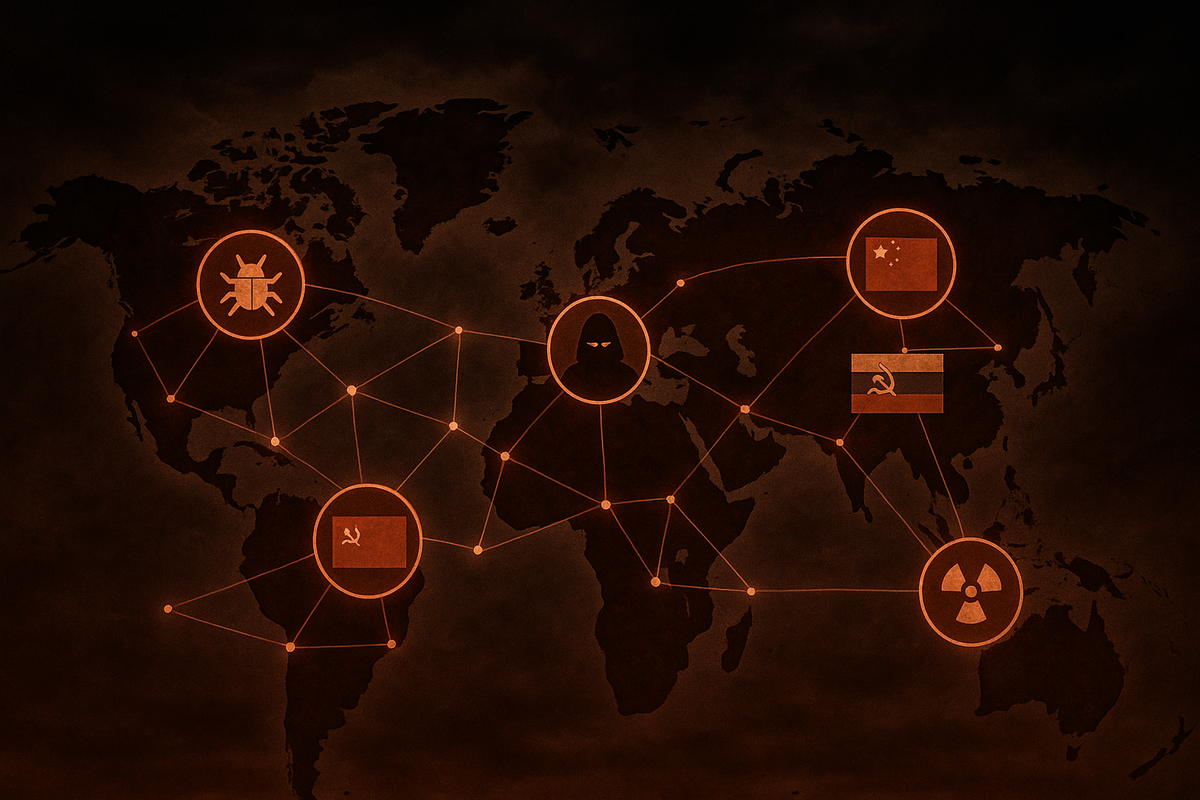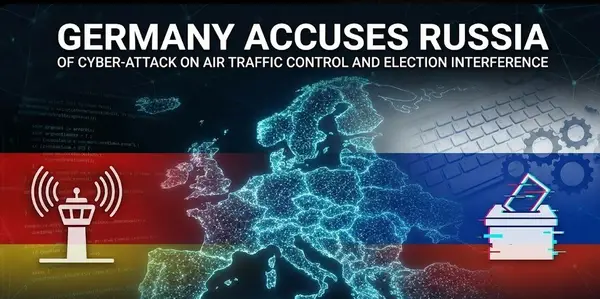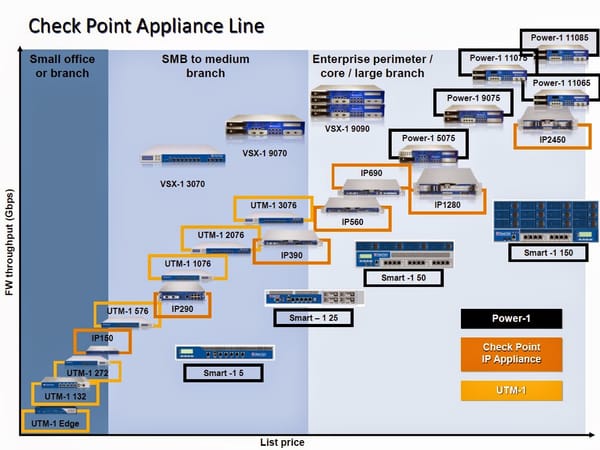The Shifting Global Security Landscape: Insights from the 2025 Annual Threat Assessment

The Office of the Director of National Intelligence released its 2025 Annual Threat Assessment (ATA), providing a comprehensive overview of the most pressing threats to the national security of the United States. This report, reflecting the collective insights of the Intelligence Community (IC), underscores a vastly more complex and dangerous security environment, shaped by both state and nonstate actors who are actively challenging U.S. interests at home and abroad. This article delves into the key findings of the 2025 ATA, highlighting the multifaceted threats and the increasing interconnectedness of global security challenges.
Understanding the Framework of the Threat Assessment
The 2025 ATA serves as the IC's official, coordinated evaluation of threats to U.S. citizens, the Homeland, and U.S. interests worldwide. Prepared in response to Congressional mandate, it aims to provide nuanced, independent, and unvarnished intelligence for policymakers, warfighters, and domestic law enforcement. The assessment primarily focuses on the most direct and serious threats expected in the coming year, while also considering longer-term challenges. The information presented was current as of March 18, 2025. The report meticulously details these threats by categorizing them under nonstate actors and major state actors.
Threats from Nonstate Transnational Actors
The ATA highlights that transnational criminals, terrorists, and other nonstate actors continue to threaten the lives of U.S. citizens and the security of the Homeland.
Foreign Illicit Drug Actors: Western Hemisphere-based transnational criminal organizations (TCOs), particularly those in Mexico, remain the primary producers and suppliers of illicit drugs, including the highly lethal fentanyl and other synthetic opioids, which caused over 52,000 U.S. deaths in the year ending October 2024.
- Mexico-based cartels like the Sinaloa Cartel and the New Generation Jalisco Cartel dominate the supply of fentanyl, heroin, methamphetamine, and South American cocaine. They primarily use official points of entry along the U.S.-Mexico border for smuggling, often concealing drugs in vehicles. However, they are expected to adapt their methods in response to increased U.S. border security.
- The growth of independent fentanyl producers in Mexico, operating autonomously or semi-autonomously from cartels, is fragmenting the fentanyl trade due to the drug's profitability and low barriers to entry.
- China remains the primary source country for illicit fentanyl precursor chemicals and pill pressing equipment, followed by India. Mexico-based brokers circumvent international controls through mislabeling and purchasing unregulated dual-use chemicals.
- Colombia-based TCOs are responsible for the vast majority of cocaine reaching the U.S., with some transshipment through Ecuador contributing to regional instability and migration.
- Mexican TCOs are increasingly using IEDs, including landmines, mortars, and grenades, in lethal attacks against rivals and security forces, significantly reshaping Mexico's security landscape.
Transnational Islamic Extremists: Despite setbacks, ISIS remains the world's largest Islamic terrorist organization and continues to seek to attack the West, including the U.S., through online outreach and exploitation of vulnerable travel routes.
- ISIS-K in South Asia is considered the group's branch most capable of carrying out external terrorist attacks globally. Their attacks in Russia and Iran in 2024 and arrests of supporters in Europe and the U.S. highlight their expanding reach.
- ISIS will likely attempt to exploit instability in Syria to reconstitute its attack capabilities.
- Al-Qa'ida maintains its intent to target the U.S. and U.S. citizens, with leaders attempting to leverage anti-Israeli sentiment.
- Al-Qa'ida in the Arabian Peninsula (AQAP) has relaunched its Inspire guide, encouraging attacks against Jewish targets, the U.S., and Europe, providing instructions for bomb-making and justifications for such attacks.
- Al-Shabaab, al-Qa'ida's largest and wealthiest affiliate, remains focused on attacks in Somalia but has a growing relationship with the Huthis, potentially providing access to more sophisticated weapons.
Other Transnational Criminals: Profit-motivated TCOs are expanding their illegal activities through corruption, intimidation, and technology, increasing their resilience to law enforcement efforts.
- They engage in fraud, money laundering, and exploit U.S. and international financial institutions. Some TCOs use digital currencies for money laundering due to perceived anonymity and weaker regulations.
- Financially motivated cyber criminals continue to target inadequately defended U.S. entities, including healthcare systems and municipal governments, and have also attacked critical infrastructure. Ransomware attacks and attacks on water infrastructure are noted concerns.
- Human traffickers exploit vulnerable individuals through false promises and coercion, sometimes engaging in other criminal activities like drug trafficking. Migrants transiting the Western Hemisphere are particularly vulnerable to kidnapping, forced labor, and sex trafficking by criminal actors, including Mexico-based TCOs.
Escalating Challenges from Major State Actors
The 2025 ATA identifies several major state actors – China, Russia, Iran, and North Korea – as posing proximate and enduring threats to the U.S. and its global interests. Growing cooperation among these actors is a significant concern, increasing the risk of broader conflicts.
China: China is identified as the actor most capable of threatening U.S. interests globally. Beijing aims to achieve "the great rejuvenation of the Chinese nation" by 2049, seeking to increase its power and influence, obtain U.S. deference, and counter challenges to its legitimacy.
- China is deeply suspicious of U.S. intentions, viewing Washington's actions as an effort to contain its rise.
- The PRC will likely continue wide-ranging cyber operations against U.S. targets for espionage and strategic advantage and struggles to constrain the flow of fentanyl precursors.
- China's military operations around Taiwan and in the South and East China Seas increase the risk of miscalculation and conflict. The PLA is developing capabilities for full-spectrum warfare and counter-intervention in the Pacific, aiming for a world-class military by 2049. This includes advances in naval power, ballistic missiles, and long-range precision strike capabilities against the U.S. periphery.
- Cyber threats from China are persistent and active, with campaigns like Volt Typhoon and Salt Typhoon demonstrating the capability to preposition access on critical infrastructure.
- Beijing will likely increase coercive pressure on Taiwan towards unification, while also using economic coercion.
- China seeks to become the leading global economic power through state-directed strategies, aiming for dominance in global markets and critical supply chains. Its dominance in critical materials provides leverage for economic coercion.
- China is pursuing an aggressive, whole-of-government approach to become a global S&T superpower, prioritizing sectors like AI, biotechnology, and semiconductors. This includes both licit and illicit means, such as intellectual property theft.
- China intends to modernize, diversify, and expand its nuclear posture, posing a direct threat to the U.S. Homeland. It also likely possesses chemical and biological warfare capabilities.
- China has eclipsed Russia as a space leader, developing advanced ISR capabilities and working towards lunar missions. It also possesses counterspace weapon capabilities.
- Beijing will continue to expand its malign influence activities to weaken the U.S. and counter perceived U.S. efforts to undermine the CCP, increasingly leveraging AI for these operations.
Russia: Russia views its war in Ukraine as a proxy conflict with the West and aims to restore its strength in its near abroad. Despite significant costs, Russia has proven adaptable and resilient, supported by China, Iran, and North Korea.
- The war in Ukraine has led to heightened and prolonged tensions with the U.S. and NATO, with an increased risk of unintended escalation and nuclear war.
- Russia retains an enduring potential threat to U.S. power through its geopolitical, economic, and military trends.
- Despite ground force losses in Ukraine, Russia maintains a robust nuclear deterrent and asymmetric capabilities, particularly in counterspace and undersea warfare. It is also developing advanced conventional capabilities.
- Russia will continue to employ various tactics below the level of armed conflict to advance its interests.
- Russia's advanced cyber capabilities and past attempts to pre-position access on U.S. critical infrastructure make it a persistent threat. Its integration of cyber operations with military action amplifies its potential impact during conflict.
- Russia has seized the upper hand in Ukraine, gaining leverage to press for negotiations on its terms. The war perpetuates strategic risks of escalation, nuclear use, and heightened insecurity among NATO allies.
- Moscow uses influence activities to stoke political discord in the West, sow doubt in democratic processes, and undermine support for Ukraine.
- Russia has the largest and most diverse nuclear weapons stockpile. Its CBW threat is expanding, with evidence of undeclared programs and recent use of chemical weapons.
- Russia continues to train its military space elements and field new antisatellite weapons.
- While its S&T ecosystem is constrained, Russia continues to deploy nascent AI applications and deepen technical cooperation with China. It is also developing a new satellite with a nuclear antisatellite capability, which poses a devastating threat.
Iran: Tehran aims to leverage its missile capabilities, nuclear program, and regional diplomacy to bolster its influence and ensure regime survival, despite facing regional and domestic challenges.
- Iran will continue to counter Israel and press the U.S. to leave the region by supporting its "Axis of Resistance".
- Tehran is investing in its missile and UAV systems, which it considers critical for deterrence and power projection. Its growing cyber expertise also poses a major threat.
- Iran seeks to counter U.S. efforts to isolate the regime by expanding relationships with U.S. adversaries and the Global South. It has deepened ties with Russia and relies on China as a key partner.
- Iran's conventional and unconventional capabilities pose a threat to U.S. forces and partners in the region. Despite recent losses, it maintains a large quantity of ballistic and cruise missiles and UAVs.
- During the Gaza conflict, Iran encouraged its proxies to conduct strikes against Israeli and U.S. interests. The Huthis have emerged as a particularly aggressive actor.
- Iran's growing expertise in aggressive cyber operations makes it a major threat to U.S. networks and data.
- While the assessment is that Iran is not currently building a nuclear weapon, there has been an erosion of the taboo on discussing nuclear weapons within its decision-making apparatus. Iran very likely aims to continue R&D of chemical and biological agents.
North Korea: Kim Jong Un will continue to pursue strategic and conventional military capabilities targeting the U.S. Homeland and allied forces. His newly cemented partnership with Russia provides financial, diplomatic, and defense cooperation.
- Kim has no intention of negotiating away his strategic weapons programs, which he sees as a guarantor of regime security. North Korea is increasing its nuclear warhead stockpile and improving its ballistic missile technology.
- Pyongyang will continue to defy international sanctions through illicit activities like cryptocurrency theft.
- Kim will act aggressively against perceived threats to the regime and may use force when its sovereignty is challenged. He could escalate to more lethal activities if deterrence efforts are seen as failing.
- North Korea remains committed to increasing its nuclear warheads and missile capabilities to threaten the U.S. and its allies. It also maintains CBW capabilities.
- North Korea's military poses a lethal threat to U.S. forces and citizens in South Korea. The partnership with Russia is expected to provide technical expertise for its weapons development.
- North Korea is funding its military development through cyber theft, stealing hundreds of millions of dollars in cryptocurrency.
The Growing Challenge of Adversarial Cooperation
The 2025 ATA emphasizes the increasing cooperation among China, Russia, Iran, and North Korea, which reinforces individual threats and poses new challenges to U.S. strength. These primarily bilateral relationships in security and defense have strengthened their collective capabilities and resilience against U.S. efforts. Russia's war in Ukraine has accelerated these ties, but the trend is expected to continue. This alignment significantly increases the risk of U.S. tensions with one adversary drawing in others. China's central role, given its ambitious goals and global influence, makes this cooperation particularly significant.
- This cooperation is largely driven by a shared interest in circumventing or undermining U.S. power.
- Russia has strengthened its military cooperation with Pyongyang and Tehran and expanded trade and financial ties with China and Iran to mitigate sanctions.
- China is providing economic and security assistance to Russia's war effort. Trade between them has increased, helping Russia withstand sanctions.
- Iran has become a key military supplier to Russia, especially of UAVs, in exchange for military and technical support.
- North Korea has sent munitions and troops to Russia to support its war in Ukraine.
- Cooperation between China and Russia has the greatest potential to pose enduring risks to U.S. interests, driven by a shared belief that they are stronger together against perceived U.S. aggression. This includes combined military activities, China providing dual-use equipment, and increased Russian energy exports to China. Their cooperation also extends to the Arctic.
Conclusion
The 2025 Annual Threat Assessment paints a stark picture of a global security environment characterized by multifaceted and interconnected threats. The convergence of challenges from nonstate actors, the assertive and often aggressive actions of major state powers, and their increasing cooperation create a complex and dangerous landscape for U.S. interests. Understanding these evolving threats, as detailed in this comprehensive assessment by the U.S. Intelligence Community, is crucial for informed policymaking and effective strategies to protect American lives and security.





